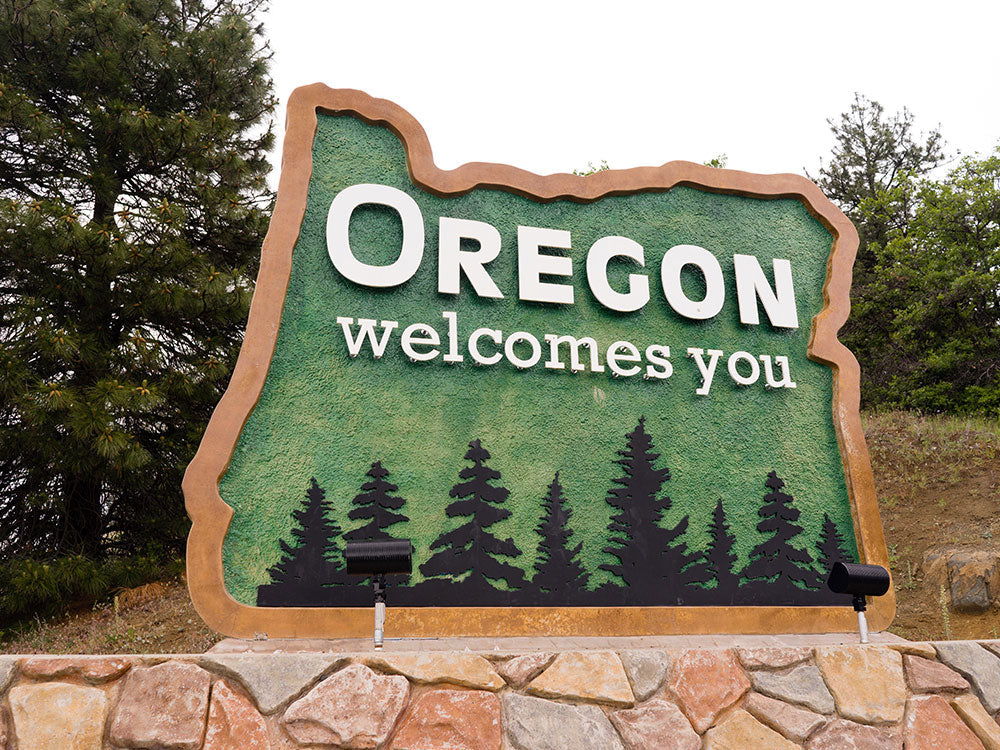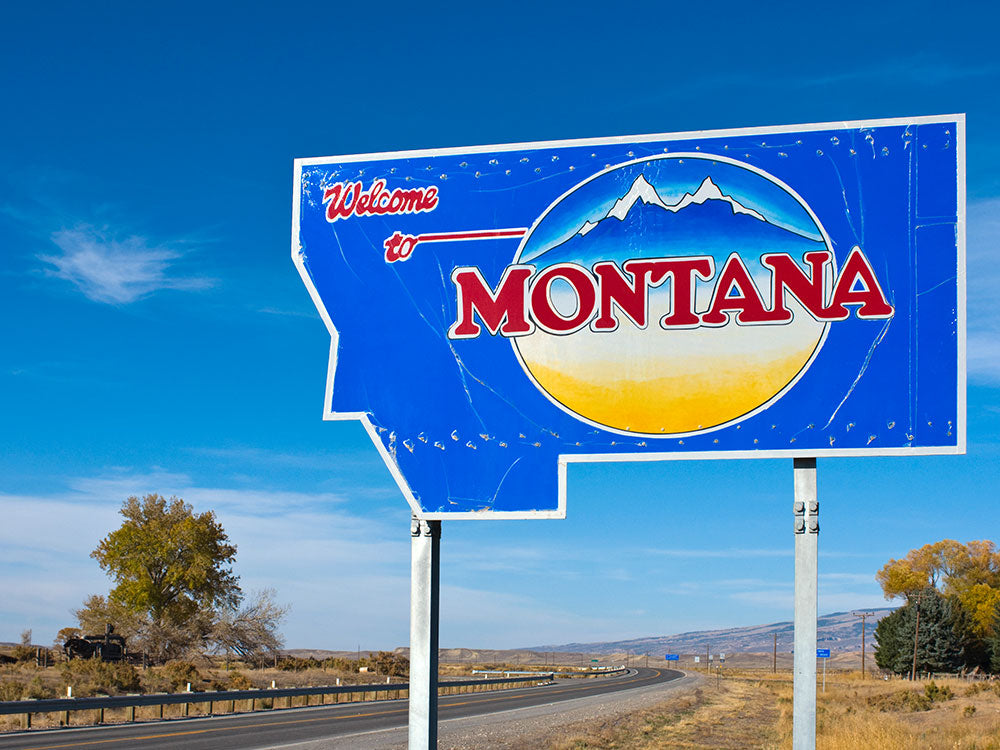Table of Content
1. Introduction
Oregon or “The Beaver State” is not just famous for its association with the ingenious builder known as the beaver. This state has also proven to be a popular haven for motorcyclists looking to find adventure. The proof can be found in its scenic byways that cut through plateaus, canyons, and mountains. The pubs and garages where motorcyclists can gather and swap stories. Team Oregon was recognized by the Motorcycle Safety Foundation.
There is plenty for motorcyclists to love about Oregon. But to make the most of the riding experience, they have to first be educated on the licensing process and motorcycle laws.
Driving a motorcycle requires skill, awareness, and a strong sense of responsibility. An Oregon motorcycle license cannot just be given to anyone who wants to know the thrill of operating a two-wheeled vehicle. A motorcyclist has to take many tests and practice for hours before he/she can earn the right to take a motorcycle on the Oregon trails.
Oregon motorcycle laws go beyond just strictly following the same traffic laws that apply to cars and trucks. They involve preparing the right motorcycle gear and equipment, possessing the necessary liability coverage in case of emergencies, and how to behave on the road when on a vehicle smaller and more vulnerable than others.
2. Oregon Motorcycle Insurance
Part of owning a motorcycle is making sure that you have motorcycle insurance . As expressed in Oregon Revised Statutes § 806.010., you are not allowed to operate a two-wheeled vehicle if you cannot produce proof that you own liability insurance coverage when requested.
You will need to acquire Oregon motorcycle insurance that covers the minimum values when it comes to injuries and loss of property:
You will have to pay $25,000 for each person injured per accident
You will have to pay $50,000 for multiple people injured per accident
You will have to pay $20,000 for property damages per accident
Besides being able to pay compensation for bodily injury and property damages, you are also required to have additional motorcycle insurance for personal injury protection and uninsured motorists.
Personal injury protection will cover medical and hospital bills due to injuries to yourself or your passenger regardless of who was at fault for an accident.
You will have to pay $15,000 for each person injured per accident
Uninsured motorist coverage helps deal with the same accident-related costs as the previous forms of insurance. This only applies if dealing with a driver who does not carry insurance or whose insurance is not enough to fully compensate for all accident-related fees.
You will have to pay $25,000 for each person injured per accident
You will have to pay $50,000 for multiple people injured per accident
To give you an overview of the required Oregon motorcycle insurance you need before operating a motorcycle, check out the Oregon Department of Transportation.
3. Oregon Motorcycle Helmet Laws
According to Oregon Revised Statutes § 814.269., all riders of every age must wear a motorcycle helmet whenever their vehicles are traveling on the roads and highways.
Wearing a motorcycle helmet comes with many benefits such as protecting you from wind, bugs, and debris. It also can be useful in preventing severe or fatal injuries to your head. Despite encompassing your head, they still allow you to see and hear well enough so that you are aware of your surroundings.
When picking out your motorcycle helmet, it is recommended that you pick either a three-quarter helmet or a full-face helmet. Both meet the quality of safety set by the Department of Transportation.
The table below maps out the features that you need to look for in a motorcycle helmet that complies with the Oregon motorcycle helmet laws:
| Requirements | Three-Quarter Helmet | Full Face Helmet |
|---|---|---|
| Has the Department of Transportation (DOT) sticker | ✔️ | ✔️ |
| Fits snugly | ✔️ | ✔️ |
| Has padded lining for comfort | ✔️ | ✔️ |
| No signs of damage Ex:// cracks, loose padding, or frayed straps | ✔️ | ✔️ |
| Has a face shield with no scratches | ❌ | ✔️ |
| Includes separate eye protection with no scratches Ex:// goggles, glasses | ✔️ | ❌ |
| Is durable enough to resist penetration | ✔️ | ✔️ |
| Gives you a clear, peripheral view of your surroundings | ✔️ | ✔️ |
| Securely fastened with neck- or chin-strap | ✔️ | ✔️ |
| Allows airflow without fogging up | ✔️ | ✔️ |
| Can allow you to wear sunglasses underneath | ✔️ | ✔️ |
If you wish to check the guidelines set for Oregon motorcycle helmet laws, you can check the section in the Oregon Vehicle Code.
4. Oregon Motorcycle License Laws
4.1 Types of Oregon Motorcycle Licenses:
If you want to legally operate a motorcycle in Oregon, you will need to earn the following qualifications:
An Oregon motorcycle instruction permit
A valid Oregon driver’s license with a motorcycle endorsement
Or
A valid Oregon driver’s license with a restricted three-wheel motorcycle endorsement
If you decide to apply for an Oregon motorcycle license at a young age, you will have to start at the bottom by getting a motorcycle instruction permit. Because most people who get a motorcycle instruction permit are minors, they have to act within the bounds of certain restrictions.
Depending on whether you prefer to ride a two-wheel or three-wheel motorcycle, the application process for getting an Oregon motorcycle license may differ. Because both types of vehicles more or less function the same, there is only a slight contrast in the requirements you need to fulfill to get a motorcycle endorsement.
In the table below, you will find the requirements when applying for each kind of Oregon motorcycle license and what you are permitted to do while operating a motorcycle:
| Details | Oregon Motorcycle Instruction Permit | Oregon Motorcycle Endorsement | Oregon Restricted Three-Wheel Motorcycle Endorsement |
|---|---|---|---|
| Can begin applying if you are at least 16 years old | ✔️ | ✔️ | ✔️ |
| Hold a valid Oregon driver’s license | ✔️ | ✔️ | ✔️ |
| Requires holding motorcycle instruction permit for at least 6 months | ❌ | ✔️ | ✔️ |
| Practice with a supervisor at least 21-year-old with a valid motorcycle endorsement on a separate vehicle | ✔️ | ❌ | X |
| Show proof that you have practiced for at least 50 hours while supervised | ❌ | ✔️ | ✔️ |
| Cannot carry any passengers | ✔️ | ❌ | ❌ |
| Can only operate during daylight hours | ✔️ | ❌ | ❌ |
| Motorcycle is larger than 50 cc | ✔️ | ✔️ | ✔️ |
| Motorcycle can go faster than 30 mph on level ground | ✔️ | ✔️ | ✔️ |
| Allows you to operate a two-wheel motorcycle | ✔️ | ✔️ | ❌ |
| Allow you to operate a three-wheel motorcycle | ❌ | ❌ | ✔️ |
| Complete a Team Oregon rider safety course | ❌ | ✔️ | ❌ |
| Provide proof of Oregon motorcycle insurance | ✔️ | ✔️ | ✔️ |
| Provide evidence of Oregon vehicle registration | ✔️ | ✔️ | ✔️ |
| Fill out appropriate driver’s license application | ✔️ | ✔️ | ✔️ |
| Must have the consent of a parent or legal guardian if under the age of 18 | ✔️ | ✔️ | ✔️ |
| Show proof of your identity | ✔️ | ✔️ | ✔️ |
| Have your social security number | ✔️ | ✔️ | ✔️ |
| Pay required fees | ✔️ | ✔️ | ✔️ |
| Present valid photo I.D. | ✔️ | ✔️ | ✔️ |
| Take a photo | ✔️ | ✔️ | ✔️ |
| Take vision exam | ✔️ | ✔️ | ✔️ |
| Pass the knowledge test | ✔️ | ✔️ | ✔️ |
| Pass the road test | ❌ | ✔️ | ✔️ |
| Provide proof of U.S. citizenship | ✔️ | ✔️ | ✔️ |
| Provide proof of residency in Oregon | ✔️ | ✔️ | ✔️ |
When applying for an Oregon motorcycle instruction permit, you will have to pay $23. While you are allowed to take the motorcycle license test within six months, the permit is valid for at least a year.
When applying for an Oregon motorcycle endorsement for your existing driver’s license, you will have to pay $87.
If you wish to find and compare the Oregon motorcycle licenses, the details can be found at the Oregon Department of Transportation.
4.2 Examples of Team Oregon Rider Safety Courses:
The purpose of the Team Oregon rider safety courses is to provide education on proper motorcycle riding behavior, motorcycle traffic laws, etc. Besides being an introductory course for aspiring motorcyclists, they also help you bypass certain sections of the Oregon motorcycle license test.
There are several rider safety courses available to help accommodate the difficulty level and age groups of different applicants. Depending on which course you decide, presenting a certificate of completion will allow you to waive taking the written, riding, or both portions of the Oregon motorcycle license test.
This table will give you an overview of the age requirements and benefits of the various Team Oregon rider safety courses:
| Team Oregon Rider Safety Course | Age Requirements | Waived Portion of Oregon Motorcycle License Test |
|---|---|---|
| Basic Rider Training | 16 years and older | Both written and riding portions |
| Intermediate Rider Training | 21 years and older | Riding portion |
| eRider Basic | 16 years and older | Riding portion |
| eRider Intermediate | 21 years and older | Riding portion |
If you wish to read more about the Team Oregon rider safety courses, you can find the section in the Oregon Motorcycle & Moped Manual 2020-2021 .
4.3 Oregon Motorcycle License Test:
When applying for a motorcycle instruction permit or a motorcycle endorsement, the written portion of the Oregon motorcycle license test requires you to complete 25 multiple choices. The questions will be based on content from the motorcycle manual. You have to get a score of 80% or 20 correct answers to get a passing grade. The fee for the written portion of the test is $5 each time.
For the riding portion of the Oregon motorcycle license test, you will be evaluated on a list of riding skills that will be demonstrated in a controlled environment. Your performance will be judged based on staying within the posted speed limit, maintaining your distance, etc. You have to get a score of 60% or higher to get a passing grade. Here is a list of possible skills you may be asked to demonstrate:
Offset Cone Weave and Swerve
Quick Stop
Cornering Proficiency
Sharp Turns
If you fall off your motorcycle, cause your motorcycle to keel over, or demonstrate any risky riding behavior, you will receive an automatic failure.
5. Oregon Motorcycle Passenger Laws
In Oregon, you are only permitted to carry a passenger if your motorcycle is outfitted with a passenger seat and footrests. The passenger seat either has to be a saddle positioned behind the rider’s seat or a sidecar attached securely to your vehicle.
The Oregon motorcycle passenger laws do not have any age restrictions regarding motorcycle passengers. However, this does not mean it is okay to transport young children on your ride.
When determining if it is safe to take on a passenger, make sure he/she is tall enough to reach the footholds, heavy and strong enough to hold onto their seat during tight turns, and able to comprehend and follow your directions.
While the motorcycle is on the road or a highway, your passenger is also required to wear a DOT-approved motorcycle helmet. Make sure to check that he/she is keeping it on from time to time.
As stated by Oregon Revised Statutes § 814.280., you are considered responsible for your passenger’s safety and are seen as at fault if you are pulled over by the local law enforcement for your passenger’s failure to wear a DOT-approved motorcycle helmet.
If you wish to know the parameters regarding motorcycle passengers laws in Oregon, you should check out the section in the Oregon Vehicle Code .
6. Oregon Motorcycle Lane Splitting Laws
As laid out by Oregon Revised Statutes § 814.240., motorcycles are not allowed to engage in lane splitting of any kind.
You are not allowed to try and pass another vehicle in front that is sharing the same lane unless it is another motorcycle.
You are not allowed to maneuver on top of the white dotted lines in between lanes nor can you ride between rows of vehicles that are stopped or slowed in traffic.
While you can ride alongside another motorcycle within the same lane, it is not suggested that you practice this regularly. Lane sharing limits the amount of space you can move in the lane you are in which could be dangerous when avoiding hazards.
To look over the specifics of lane splitting laws and restrictions in Oregon, you can check this excerpt provided by the Oregon Department of Transportation .
7. Oregon Motorcycle Safety Features
So long as your motorcycle avoids hitting hazards and its chassis remains intact, it should stay in good condition, right? Well, the functions of your motorcycle will start to break down if enough time passes.
Your motorcycle’s functions are not limited to just the ones that help the engine run, turn on the pavement, and come to a stop. These also include the ones that help grab the attention of the other drivers and help you see when it gets dark.
While your motorcycle can keep working if something like one of the turn signal lights goes out, it is best not to ignore any potential issues that could result in mechanical failure later. If you believe that your motorcycle is not working at full capacity, try to get it fixed as soon as possible.
Horn
Wheels
Windshield (if applicable)
Handlebars
Brake system (Operated by hand or foot)
Controls
1 to 3 headlight(s)
Taillight
Brake light (Stop lamp)
License plate light
Rear red reflector
Front turn signal lights (required for models after 1972)
Rear turn signal lights (required for models after 1972)
Exhaust system
Muffler
Rearview mirror
Wheel fenders
If you need to find the checklist to help you know where to look when inspecting your motorcycle, you can read the Oregon Motorcycle & Moped Manual 2020-2021.
8. Oregon Motorcycle Exhaust Noise Laws
As stated in Oregon Revised Statutes § 815.250., it is illegal to operate a vehicle on Oregon roads or highways without a proper exhaust system installed. For your exhaust system to be considered in good condition, it must have the following characteristics:
The exhaust system must always be working when your motorcycle is running
The exhaust system must show no signs of damage or malfunctioning
The exhaust system must abide by the standards set by the Department of Environmental Quality
Based on the manufacturing year of your motorcycle, you will have to adjust the muffler slightly so that it falls below the set decibel value.
For motorcycles built before 1976, the noise limit must fall at or below 94 decibels.
For motorcycles built in 1976, the noise limit must fall at or below 91 decibels.
For motorcycles built after 1976, the noise limit must fall at or below 89 decibels.
If you wish to review the exhaust noise restrictions for a specific model year, you may want to read the section in the Oregon Vehicle Code .
9. Takeaway
For most motorcyclists, their biggest concern is acting with caution while on the Oregon highways to avoid getting injured or attracting unwanted attention from local law enforcement. A motorcyclist must be attentive and respectful of the rules of the road. After all, no one wants to risk harm to passengers by doing something stupid like lane splitting at the wrong time. But what you do while your feet are planted on the ground is equally important.
Every motorcyclist starts their journey working towards their valid motorcycle license in Oregon. While acquiring a DOT-approved motorcycle helmet, memorizing the information from the motorcycle manual, and practicing on your ride repeatedly may be the duller moments, you will come to appreciate the time spent when your riding expertise is put to the test. Taking what knowledge you currently have at your disposal, you will feel satisfied when you conquer the Oregon motorcycle license test and rightfully get your motorcycle license through your efforts.
Your motorcycle can be your most reliable form of transportation so long as you make it a habit to take good care of it. All the safety features work together not just to keep you safe from crashing into other drivers. They are there for the convenience of the vehicles you happen to pass by or are stuck in traffic with. The best motorcycle rides in Oregon are the ones where everything goes smoothly and according to plan. But that is only possible if your motorcycle works as it is supposed to.













Leave a comment
All comments are moderated before being published.
This site is protected by hCaptcha and the hCaptcha Privacy Policy and Terms of Service apply.